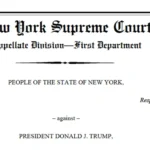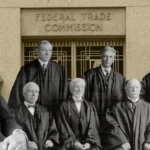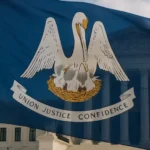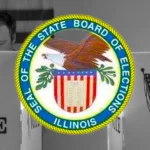
The debate over universal injunctions reached one of its highest points last week as the Supreme Court considered oral arguments in Trump v. CASA, Inc. (2025). There, the Trump administration challenged a lower court’s order prohibiting the Government from implementing the President’s Executive Order ending birthright citizenship. U.S. Solicitor General D. John Sauer argued that injunction was “improper[]” because it exceeded the district court’s power and granted relief to parties who had not brought a lawsuit.
In oral arguments, General Sauer identified 40 universal injunctions against the Trump administration during his first three months in office, halting broad aspects of his agenda. That’s already more than the Obama administration after its eight years in office and more than double the number issued under the George W. Bush administration. Factor in Trump’s first term in office and he holds the unenviable record of “most enjoined President of all time.” He beats the closest two-term runner-up, former President Obama, more than six times over.
Ordinary injunctions are a standard tool in a judge’s toolkit for crafting remedies to particular “cases” or “controversies” brought before them. They’re a longstanding form of “equitable relief”—a court order forcing someone to do something or not do something. They typically only apply to the parties bringing the lawsuit before the court.
But universal injunctions are in a league of their own. What counts as a “universal injunction” is complicated, but a good definition is “an injunction . . . that prevents the [G]overnment from implementing a challenged law, regulation, or other policy with respect to all persons and entities, even those not before the court in the litigation.” (emphasis original). They essentially “shut down” the order, initiative, or regulation “everywhere,” even for people that didn’t file a lawsuit.
So, for example, when several Democrat-led states challenged the President’s executive order restricting birthright citizenship, the states applied for—and were granted—a universal injunction against the President’s action. Thus, the President cannot implement that order against anyone anywhere until the injunction is lifted.
Because federal judges have issued these orders against Democratic and Republican administrations alike, criticism has been bipartisan. Last year, then-Senate Majority Leader Schumer (D-NY) introduced a bill seeking to limit the accessibility of universal injunctions. Several weeks ago, Senator Grassley (R-IA) introduced another bill to limit courts’ ability to issue them. Similarly, Chief Justice Roberts and Justices Kagan, Gorsuch, and Thomas have expressed their own concerns with various aspects of universal injunctions.
All this raises the question—how did we get into this mess?
No pre-colonial English court ever issued a “universal injunction.” As noted legal scholar and professor at Notre Dame Law School Samuel Bray argues, that was due to the courts’ identification with the Crown itself. After all, how could you “enjoin” the King from doing something when the King essentially is the law? At a more parochial level (say, a group of tenants suing their landlord) English chancellors of equity were careful to limit any relief to the parties that brought the lawsuit. The only exceptions were for “bill of peace” lawsuits—a kind of proto-class action case where a few representatives of a small numeric and geographic group with an obvious common interest could sue on behalf of the entire group. Justice Thomas alluded to this history when he questioned the Trump administration and the plaintiffs in Trump v. CASA, Inc.
Early American courts followed their English predecessors. Alexander Hamilton saw this principle as a powerful constraint on judicial power, writing in Federalist No. 78 that “courts . . . adjudicate the rights of individual[s]” before them, not the rights of anyone anywhere in the country. And courts followed suit, ordinarily “tak[ing] care to make no decree to affect” individuals who were not party to the case before them.
Even in 1923, the Supreme Court refused to issue a universal injunction despite being asked by the plaintiff, a taxpayer challenging the government’s use of her tax dollars to fund a program she believed to be unconstitutional. The Court’s reasoning? There was “no precedent sustaining the right to maintain suits” requesting a universal injunction, at least as far as the Court was aware.
A New Deal-era legal fight provides yet another striking example of how the courts viewed their own authority well into the twentieth century. The New Deal Congress passed, and President Roosevelt signed, the Agricultural Adjustment Act in 1933. The Act sought to increase crop prices by reducing overproduction. It also sparked thousands of legal challenges throughout the country.
Courts repeatedly found some of the Act’s provisions unconstitutional. Even then, not one court isued a “universal injunction” blocking the Act’s enforcement anywhere in the country. The alternative? Courts issued around 1,600 non-universal injunctions against it, district-by-district. If courts believed they could have issued such an injunction, and the Act’s unconstitutionality was so apparent to every judge to consider it, perhaps the 400th, 600th, or the 1,590th court to address the issue would have issued one. As far as we know, no court did.
A shift began in the 1960s. In Wirtz v. Baldor Electric Co. (1963), the D.C. Circuit Court of Appeals “conditionally enjoined” a Department of Labor regulation on “the electrical . . . generators industry” from enforcing its regulation on “any business in the industry,” not just Baldor Electric. As noted legal scholar Samuel Bray notes, the D.C. Circuit “cited no previous example of such an injunction” in U.S. history. And the Supreme Court affirmed the possibility of such injunctions just five years later in Flast v. Cohen (1968), another case on taxpayer standing. Circuit courts then began to issue their own universal injunctions in other cases, while the Supreme Court either ignored them or let the orders stand.
After the 1960s and ‘70s, courts simply began to assume they always had the power to issue universal injunctions with little question, settling the practice into American equity jurisprudence.
Even in the decades following Wirtz, universal injunctions were rare. And universal injunctions against broad swaths of a presidential administration’s agenda were rarer still. The sweeping universal injunctions we see today appear to be a twenty-first century phenomenon.
Of course, the fact that universal injunctions are novel in American history does not necessarily mean they should be disposed of. Bipartisan commentators have argued that they may indeed serve a useful role, especially as federal (and executive) power has expanded over the last 100 years. There may in fact be a majority on the Supreme Court in favor of something like this position.
Perhaps, as former-Judge Gregg Costa has argued, Congress should limit universal injunctions to mixed District Court/Circuit Court panels with expedited appeals to the Supreme Court. Or perhaps the Supreme Court should impose more stringent requirements for issuing such injunctions.
That said, universal injunctions (at least as currently constituted) have significantly distorted the Constitution’s separation of powers. The Court and/or Congress must address this problem sooner rather than later.
SUPPORT LANDMARK LEGAL FOUNDATION
We are truly facing existential threats to our individual rights and liberties, the Constitution, and our national character. If unchallenged, this assault on our very way of life will ruin our great nation. With your financial and moral support, Landmark is not going to let that happen without a fight. Will you join us?
JOIN OUR MAILING LIST
Never miss an update from Landmark Legal Foundation as we continue the fight to preserve America’s principles and defend the Constitution from the radical left.





